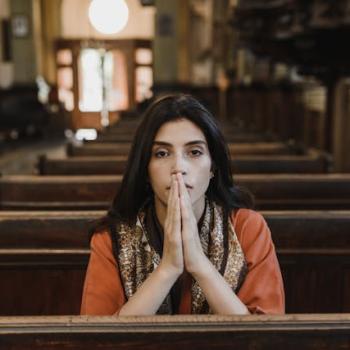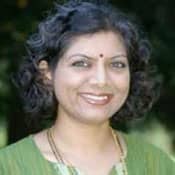At the beginning of the school year, another immigrant mom and I compared notes on how our middle school sons had spent their summers: with their grandparents, in the lands of their forefathers, the neighboring countries of Pakistan and India. She narrated how her daughter speaks their mother tongue, and her two sons, like my son, can eke out a few sentences. While they get by with this limited knowledge of the language, she bemoaned that they also get ridiculed for their incorrect intonation, their limited language ability.
In fact, she stated something that was the story of my life as a young adult: our kids do not fit in, either in America or in their parent country. Fortunately, I realized that navigating the hyphenated immigrant identity is a balancing act, a realization that took root as I started the journey of parenting, and is continually reinforced by what has been happening since 9/11.
In Becoming American? The Forging of Arab and Muslim Identity in Pluralist America, Georgetown University professor Yvonne Haddad questions what it means to be truly American. While she is addressing the issues that Arabs and Muslims face, much of what she said about the immigrant experience resonated with me: I could trade the word Arab or Muslim for Indian or Hindu, respectively and the sentences below would still have meaning.
"Those who emigrated in the second half of the twentieth century brought with them diverse national identities . . . For immigrants, their attachments to these national identities are continually tested by events in their home countries and by American foreign policy towards their countries." This especially applies to Hindus, who have linguistic and socio-economic divisions, just as the Jewish community did centuries ago; think of German Jews, Polish Jews, Russian Jews, and the varying reasons they immigrated to the United States over the centuries.
"Not all Arabs living in the United States are immigrants. Temporary residents appear to have some influence on immigrants, as they interact with them in cultural, social, religious, and political affairs." This is my daily experience as an IT Analyst, working not only side by side with temporary workers from India, but also in daily interaction with colleagues in India over the internet.
"Who is a Muslim? When does one cease to be a Muslim? What is the relation of Islam to culture, to politics, to economic practices, and how does a Muslim maintain adherence to Islamically prescribed and proscribed admonitions that relate to these issues? Given the broad range of backgrounds and associations, what practices and beliefs are negotiable, fixed, or malleable? How does the cultural baggage carried by the immigrants influence their perception of Islamic culture as it takes root in America?" There is a part in this passage that I didn't connect to—the adherence to admonitions—which is easily understood by considering Hinduism as an open source faith.
"The immigrants had no experience with being a minority, of living in diaspora, or of creating institutions or organizing religious communities. They had no imams or religious leaders to provide instruction in the foundations of the faith." Hindus have religious leaders who come from a very different context, and so the community also face challenges in receiving instruction in the foundations of the faith.
". . . immigrants from the Arab world have prospered in the United States. They have 'made it' by working hard, carefully shedding their particular cultural distinctions, compromising and blending in. They have not, as yet, been welcomed as a group into the American mainstream." This is a point that Aseem Shukla also made in reference to Nicki Haley and Bobby Jindal, who left their parent Dharmic traditions for mainstream Christian denominations.
Haddad joins many other voices raised today in reiterating America's ideals of religious pluralism—those of Hindu-Americans, Muslim-Americans, Jewish-Americans, Christian-Americans—all seeking authentic interfaith dialogue and an acceptance of the religious diversity that is intrinsic to our country and our world. Her voice also reminded me of another distinguished scholar, John Kelsay of the University of Florida. Kelsay, in Arguing the Just War in Islam, provided a systematic account, not of forging an Arab or Muslim American identity, but of the historical precedents and Quranic sources upon which the modern day calls to jihad are made. His work explained the complexities of interpretation within Islam, which must be explored and synthesized for the development of a moderate Islam for the current geo-political context.
I am thankful that that the concept of pluralism is something that is so fundamental to being both Hindu and American, that the synthesis and exploration was already prescribed for me with the concept of Truth. My life's journey is to find It—and find balance between my hyphenated national, religious, and ethnic identities as an Indo-Hindu-American.
For more conversation on Yvonne Haddad's new book Becoming American?, visit the Patheos Book Club here.
9/21/2011 4:00:00 AM





